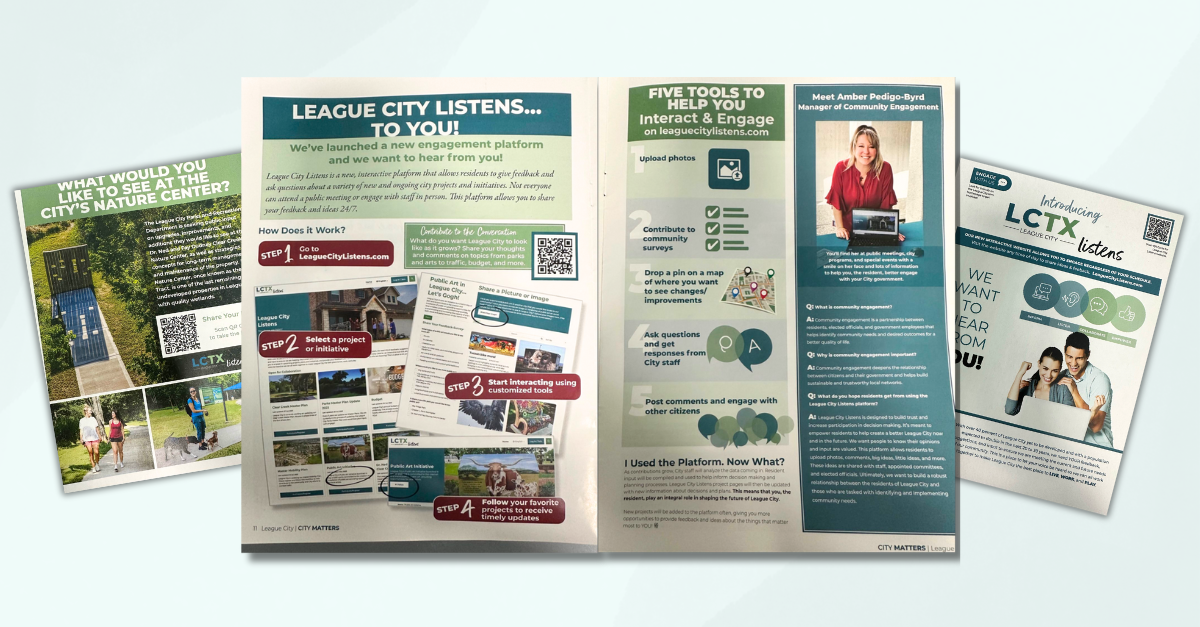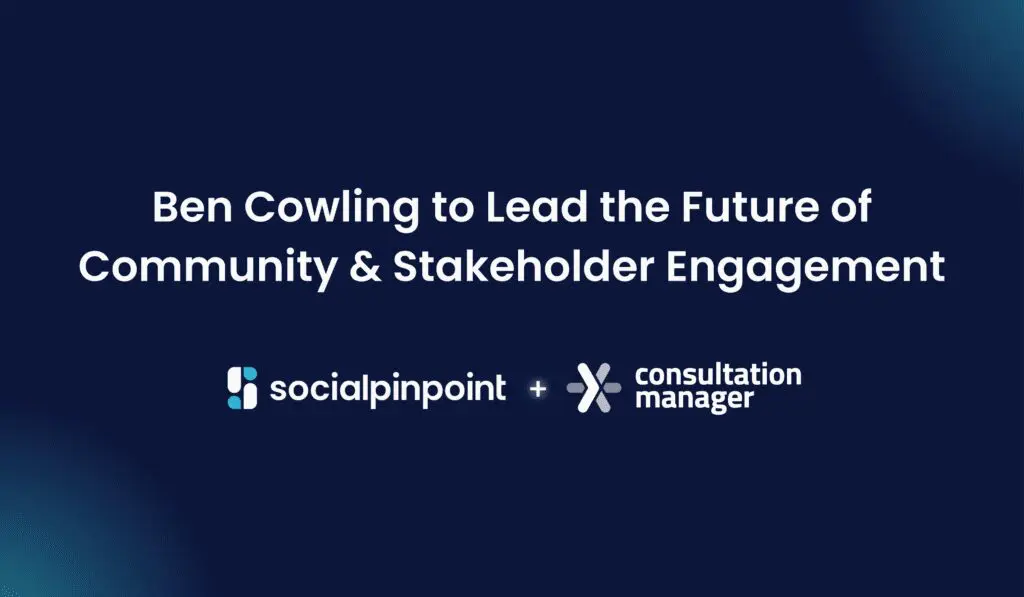In today’s landscape, having an online community engagement platform is essential to connect with your residents, gather feedback, and involve members in decision-making. However, simply having a community engagement platform isn’t enough. To make a real impact, you need to drive traffic to your engagement site, ensuring you hear from a diverse range of voices. More traffic means richer insights, empowering you to make decisions that truly reflect the needs and perspectives of your community.
In a world where people are inundated with information and competing messages, capturing your audience’s attention and encouraging visits can be challenging. Fortunately, there are several strategies that can help you cut through the noise and attract more visitors to your platform.
In this article, we share six proven tips to boost traffic to your engagement site, ensuring more people stay informed, provide feedback, and contribute valuable insights to help guide your projects.
Six Tips to Drive Traffic to Your Engagement Site
If you’re struggling to attract traffic to your engagement site, don’t worry. These six tips will help you increase visibility and engagement for your projects.
- Connect and Engage with Online Community Groups
- Optimise Your Site for Search Engines (SEO)
- Leverage Printed Material
- Implement Hybrid Engagement Strategies
- Use Email Campaigns to Keep Residents Engaged and Informed
- Invest in Paid Advertising to Boost Visibility
1. Connect and Engage with Online Community Groups
Get your engagement platform in front of the right people by tapping into relevant online community groups. Use social media platforms like LinkedIn, Facebook, and Instagram to share your projects, and encourage your colleagues to reshare. By leveraging their networks, you can amplify your reach and attract more visitors to your site.
For example, joining active popular Facebook groups that are centered around your community or related topics can help you reach individuals who are likely to be directly affected or interested in your project. Sharing your engagement site within these groups not only increases visibility but also fosters trust by engaging directly with the residents where they already gather and converse online. You could also reach out to admins or community influencers within these groups, as residents are more likely to engage with their peers due to established relationships and trust.
Additionally, actively engaging with comments, questions, and discussions within these groups not only boosts visibility but also strengthens relationships. It demonstrates your commitment to inclusivity and open dialogue, further enhancing the connection with your community.
2. Optimise Your Site for Search Engines (SEO)
Search engine optimisation (SEO), is the practice of improving your website’s visibility on search engines like Google. The goal is to make it easier for your target audience to find your site when they search for topics related to your projects.
For example, if you’re conducting a corridor study of the I-5 through Downtown Seattle and seeking public feedback, you’d want your site to appear in search results for queries like:
- Downtown Seattle corridor study
- Provide feedback for I-5 corridor study
- Downtown Seattle I-5 corridor improvements
If your site isn’t appearing for these terms, you may not be ranking high enough for search engines to consider it relevant. Simple adjustments, like using targeted keywords and optimising your content, can significantly improve your search engine rankings. Remember, Google handles more than 90% of online searches, so focusing on optimizing your site for Google is crucial to increasing visibility.
Tools like Semrush can help with SEO efforts by offering features such as keyword research, site audits, backlink tracking, and content analysis. These tools help identify opportunities to improve visibility and ultimately drive traffic to your website.
For more in-depth SEO tips, check out our article on – SEO Tips for Online Community Engagement [with Examples].
3. Leverage Printed Material
It’s also a good idea to provide different types of content to cater to many demographics within your community. You can tailor your approach to help ensure that everyone feels included and has an opportunity to participate meaningfully. For example, you can distribute flyers with step-by-step guides, QR codes, and instructions on how to access your engagement site and provide feedback.
Adding QR codes to these flyers makes it easy for smartphone users to quickly visit your engagement site. It’s especially useful if you’re reaching individuals who might not have come across your site online previously, creating a seamless connection between physical and digital engagement while increasing awareness of your engagement platform.

The City of League City is a great example of utilizing printed materials to engage with their community, by incorporating QR codes onto their flyers, to guide residents directly to their digital engagement platform, League City Listens.
We also highly recommend printed materials to guide residents to the platform. This layout is nice because it describes the steps in a simplistic format. It’s always good to remember people who are not familiar with your online platform are probably seeing it for the first time. It’s never wise to assume they will know their way around each tool. A quick description and “how to” can really change your level of engagement with residents.” – Amber Pedigo-Byrd, Manager of Community Engagement and Special Projects at City of League City
4. Implement Hybrid Engagement Strategies
To reach a wider audience, consider offering a mix of digital and in-person engagement methods that cater to diverse communication preferences. This could include virtual town halls, both in-person and online workshops, pop-ups, and informative webinars.
By holding in-person and virtual events, you can showcase your engagement site and encourage attendees to visit it and leave feedback. This can be done by highlighting the benefits of using the site and showing them how they can engage with your project online.
By combining printed material such as flyers and QR codes (as mentioned in point 3), you can encourage participants from in-person events to continue engaging on your online platforms. This strategy helps your organisation gather more feedback while increasing traffic to your engagement site. Catering to the diverse needs of your community fosters better-informed decisions and a more inclusive engagement process.
Melissa Clarke, Community Engagement Officer for Port Adelaide Enfield, highlighted the importance of engaging community members through diverse channels to ensure active participation from all groups, particularly during PAE’s Shaping Inclusion initiative.
We provide a variety of ways for people to get involved, so that we aim to offer something that everyone is comfortable in or is able to participate in. So whether it’s the online tools, the hard copy, from getting out and about and talking to people at popup sessions, having the option to give us a call and have a chat, and then the different languages online. We try and address it by offering something that allows everyone to get in and be part of the conversation.”
To read more on PAE’s Shaping Inclusion initiative, read our full case study here.
5. Use Email Campaigns to Keep Residents Engaged and Informed
Email marketing is a powerful tool that allows you to create and send high quality content tailored to specific segments of your audience, based on factors such as demographics, previous interactions, or areas of interest. By personalizing your messages and adding call-to-actions (CTAs), you can foster more meaningful engagement that resonates with recipients, increasing the likelihood that they will visit or revisit your site.
For example, including a ‘Follow’ button on your project page allows residents to sign up for email updates on initiatives that are important to them or directly affect them. This personalized approach helps keep your audience engaged and informed, encouraging them to return to your site for the latest updates, participate in surveys, or engage in discussions about ongoing projects. Additionally, regular email campaigns can serve as timely reminders for upcoming consultations, events, or deadlines for submitting feedback.
Effective email campaigns also provide valuable insights through analytics tracking. Metrics like open rates and click-through rates can help you assess how well your content is performing and the strategies that drive the most traffic to your engagement site.
By keeping residents informed and providing direct links to engagement opportunities, you create a seamless pathway for community members to actively participate in discussions. Well-crafted email campaigns strengthen connections with your community and drive traffic to your engagement platform.
6. Invest in Paid Advertising to Boost Visibility
Using online advertising platforms like Google Ads and paid social media campaigns allows you to target specific groups within your community based on demographics, location, and interests.
Targeted advertising increases your platform’s visibility and makes it easier for people to find, particularly those who might not discover it through organic search or traditional outreach efforts. It ensures your message reaches the right people at the right time.
Paid advertising also provides the opportunity to include compelling calls-to-action, encouraging users to visit your platform. It’s an effective way to promote specific engagement opportunities—such as public consultations, workshops, or feedback sessions—boosting attendance and community participation. For example, promoting a “Register Now” link for an online community workshop on feedback session through targeted LinkedIn ads can help you reach the right community members, enhancing engagement and turnout.
Driving traffic to your online engagement site is crucial for fostering meaningful community participation and ensuring your projects’ success. While establishing an online platform is an essential first step, it’s equally important to promote it through strategically.
By leveraging tools like SEO, paid advertising, email campaigns, hybrid engagement methods, and printed materials you can connect with a diverse audience, including hardly reached communities such as older adults, youth, or rural communities. These strategies not only increase visibility but also build trust through meaningful engagement.
Even small adjustments can lead to significant results, as evidenced by councils that have successfully boosted participation through simple yet thoughtful initiatives. By implementing the strategies outlined here, you can create a more inclusive, impactful, and accessible engagement experience, driving traffic to your site for meaningful participation.
Are you incorporating these strategies into your engagement efforts? If not, what methods have worked for you in driving traffic to your engagement site?












